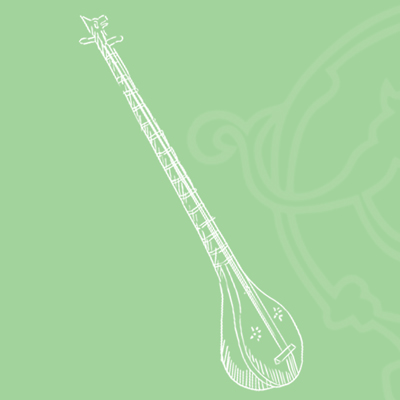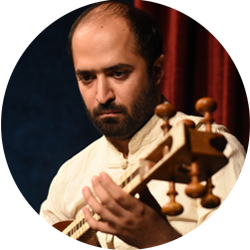Setar is a stringed instrument. It is made of wood, metal, catgut or nylon strings. The player moves his right hand on the neck for keeping frets and picks with his left-hand’s forefinger.
Setar has 4 strings from Ghajar period. The strings made of steel and brass. They are drawn from sound box to canopy.
Setar was known as a member of Tanbour family but it is more similar to Tar now. Most of the Tar players are familiar with the playing of Setar. The player sits and keeps it horizontally on his thigh. So, in this position, the sound box is on the right side and the neck on the left side of his body.
At first, Setar had 3 strings and the fourth string was added to it later. Setar has 25 to 26 frets which are made of animal intestines or silk. It has delicate sound and the audio range of Setar is 3 octaves as the audio range of Tar.

Instructor:
- M.A. in Music from Tehran University of Art
- Milad Miri trained by Great Masters, Hossein Alizadeh, Dariush Talaii, Ehsan Emami, Behrouz Hemati, and Azad Mirzapour.
- Then, he received the rank 2 in the entrance university exam and pursued academic music studies at Tehran University of Art.
- He learned music science under the supervision of the professors Sharif Lotfi, Amir Eslami, Saeed Honarmand and Ehsan Zabihifar.
After graduation from the bachelor degree in Persian music, he pursued his artistic activities in the fields of conducting and teaching. The following is a list of some of his art activities:
- Co-operation and performance of the concert with Soran music band under the supervision and composition of Ramin Safaee.
- Performance in the concert with the Moje-no Orchestra by composing of Ali Ghamsari and Mohammad Motamedi in Vahdat and Roodaki Hall.
- Performance in the concert with the Musighie-no Orchestra by Alireza Mashayekhi as the conductor in Rudaki Hall.
- Performance in many concerts with different Persian music groups in Tehran and various cities of Iran.
 WhatsApp us
WhatsApp us
